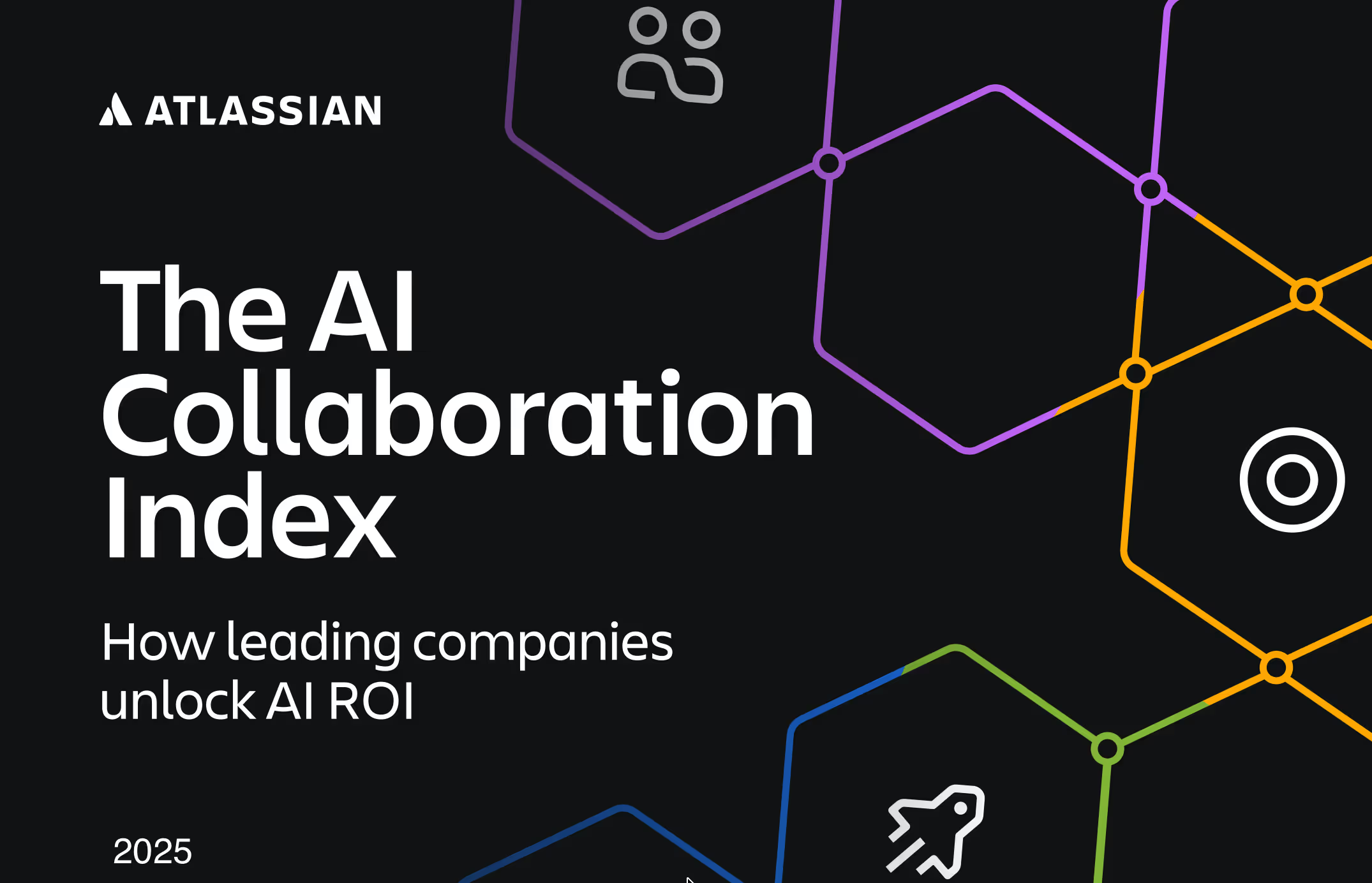AI Needs More Than Speed: Why Governance, Retention, and ISO 42001 Alignment Matter for Real ROI
The AI boom has been long on headlines and short on returns. For all the talk of transformative power, most companies are still chasing incremental productivity gains: an email drafted faster here, a meeting note summarized there. What’s often missing is the organizational lift. The coordination, trust, and quality of knowledge that let AI move from expensive gimmick to genuine growth engine.
That’s the sobering conclusion of Atlassian’s new AI Collaboration Report 2025, which arrives on the heels of the recent MIT report on AI adoption and productivity. MIT’s researchers found that while individual workers often report efficiency gains, those benefits rarely compound into measurable improvements in firm-wide performance. Atlassian’s study, surveying 12,000 workers and 180 executives across the Fortune 1000, echoes and sharpens the point: 96 percent of organizations have not seen AI drive transformational change. Only four percent, those who approach AI as a governance and collaboration challenge, are currently realizing enterprise-scale benefits.

The "Productivity Pitfall"
The temptation is easy to understand. An executive sees a chart showing “33 percent productivity gains” when employees use AI to write code or process reports. But as the Atlassian study highlights, this narrow focus on personal productivity is a dead end. One third of executives admit AI has wasted their teams’ time or led them in the wrong direction. Forty-two percent of employees confess they sometimes trust AI outputs without validating accuracy. And too often, workers rely on unapproved AI tools that aren’t connected to company systems—fragmenting knowledge, worsening silos, and creating new security risks.
AI without good governance is a shiny distraction. It produces more output, but not necessarily better outcomes. In fact, the report suggests that Fortune 500 companies could forfeit nearly $100 billion annually in lost returns if they continue treating AI as a personal assistant rather than an organizational teammate.
What the four percent do differently
Atlassian’s research identifies a set of practices that separate the four percent of “transformational” companies from everyone else. They are not simply buying more AI tools, instead they’re embedding AI into the connective tissue of their organizations.
- They build connected knowledge bases where AI can surface accurate, verified context across teams.
- They set up systems of record: integrating analytics, goals, and communications so AI has clear visibility into what matters most.
- They make AI part of the team, assigning it explicit responsibilities in projects and encouraging experimentation at every level.
In other words, they govern their AI strategies well. Not in the punitive sense of locking down every action, but in the proactive sense of making knowledge clean, consistent, and accessible.
Where standards fit in: ISO 42001 and beyond
Interestingly, the Atlassian report never once mentions ISO/IEC 42001, the new international standard for AI management systems. But read between the lines, and you see a natural alignment.
ISO 42001 emphasizes roles and responsibilities, risk management, and continuous improvement. The Atlassian report, in its own language, stresses documenting ownership, tagging work as draft or verified, defining AI’s project role, and revisiting those choices regularly. Both perspectives converge on the same truth: AI without structure drifts into noise. With structure, it can amplify human decision-making instead of replacing it.
For companies in regulated industries or those who simply want to build responsibly, there’s an opportunity here. Map Atlassian’s cultural recommendations into the ISO framework, and you gain both agility and assurance. The same practices that make AI more useful also make it auditable.
Retention and hygiene: the overlooked piece
One of the most striking sections of the Atlassian report is its warning about polluted knowledge bases. AI makes it easier than ever to generate new content: but if that content is outdated, duplicative, or simply wrong, it contaminates everything downstream.
This is where classification, data retention, and hygiene come in. Teams must not only capture knowledge but also curate it properly. That means archiving or deleting expired information, marking draft work clearly, and defaulting to open, AI-accessible spaces instead of burying context hidden in private chats.
At Opus Guard, we see this every day. Customers running Atlassian’s new Rovo agents want the assurance that their AI is pulling from fresh, compliant, and high-value content only. Retention automation isn’t just a compliance safeguard, it’s an AI enablement strategy. Cleaner data inputs yield cleaner AI outputs. And when regulators come knocking, defensible deletion and policy-aligned retention show that good governance is more than a checkbox. It’s an investment in efficiency and better ROI.
Moving beyond “Time Saved”
The report also calls on executives to rethink how they measure AI success. Time saved is the wrong North Star. The right questions are:
- Is AI helping us solve existing problems with less effort?
- Is it consistently raising the quality of our outputs?
- Is it empowering us to do things we couldn’t do before?
This shift mirrors what we hear from CIOs and compliance officers. They don’t want more words per minute, they want fewer errors in customer communications, shorter incident cycles in IT, or faster learning loops in product design. Those are governance outcomes that are measurable, strategic, defensible. In other words, those are good goals.
A call to all leaders
Atlassian’s AI Collaboration Report and MIT’s research converge on the same insight: the real constraint on AI’s value isn’t model performance, it’s human systems. The organizations that thrive will be those that combine cultural adoption with good governance.
For leaders, that means investing as much in information strategy as in AI experimentation. It means aligning with standards like ISO 42001 not to check a box, but to ensure AI is trusted and transparent. It means taking retention and hygiene seriously so your AI is trained on knowledge you’d stand behind in a boardroom or in a courtroom.
The companies that make this leap won’t just see productivity bumps. They’ll see the kind of transformation that comes when AI truly acts as a teammate: coordinating goals, surfacing insights, and empowering innovation. The four percent today will become the market leaders of tomorrow. The rest will look back at this moment and realize that speed, without governance, was just more busywork.
👉 Ready to transform your AI strategies with good governance? Get started with Content Retention Manager free via Atlassian Marketplace today.


